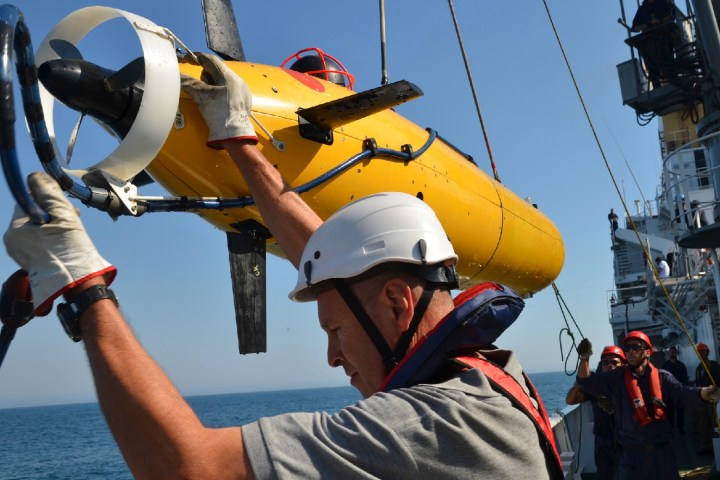
That’s what the NATO Science and Technology Organization’s [Center] for Maritime Research and Experimentation (CMRE) has developed with newly sponsored research designed to establish the world’s first-ever acoustic digital underwater communications standard. Called Janus, the new digital alternative has been used by all NATO allies since earlier this year — and represents the first time a digital underwater communication protocol has been established at a global level. Considering that more than 70 percent of the globe is covered by water, it’s about time.
On the surface, the idea of an underwater communication standard might sound a bit unnecessary. After all, we’re still getting used to smart devices on dry land, so do we really need them in the ocean, too? The short answer is “yes.” For instance, underwater communications will allow for the creation of underwater networks that will let undersea robots work together autonomously and report findings back home. This could be used for everything from detecting underwater leaks in oil rigs and harbor protection to mine detection and underwater archaeology. Such applications will only become more important.
“Robots can behave intelligently and act as a team,” said Joao Alves, Principal Scientist and Project Leader at CMRE, in a statement. “For example, one of the robots could find some interesting feature and call the rest of the team.”
Janus — named after the Roman god of openings and gateways, if you’re interested — operates by defining the common frequency of 11.5 kilohertz, through which underwater devices can communicate. Once they have connected, they then have the option of switching to another frequency or protocol to maximize their underwater comms abilities.
Given that we can only dream of every land-based IoT device speaking the same language, Janus is actually pretty ahead of its time.
We just hope the researchers have put enough work into the security side of things. Because the idea of NATO’s entire underwater fleet getting hacked totally sounds like the premise of a new James Bond movie.


